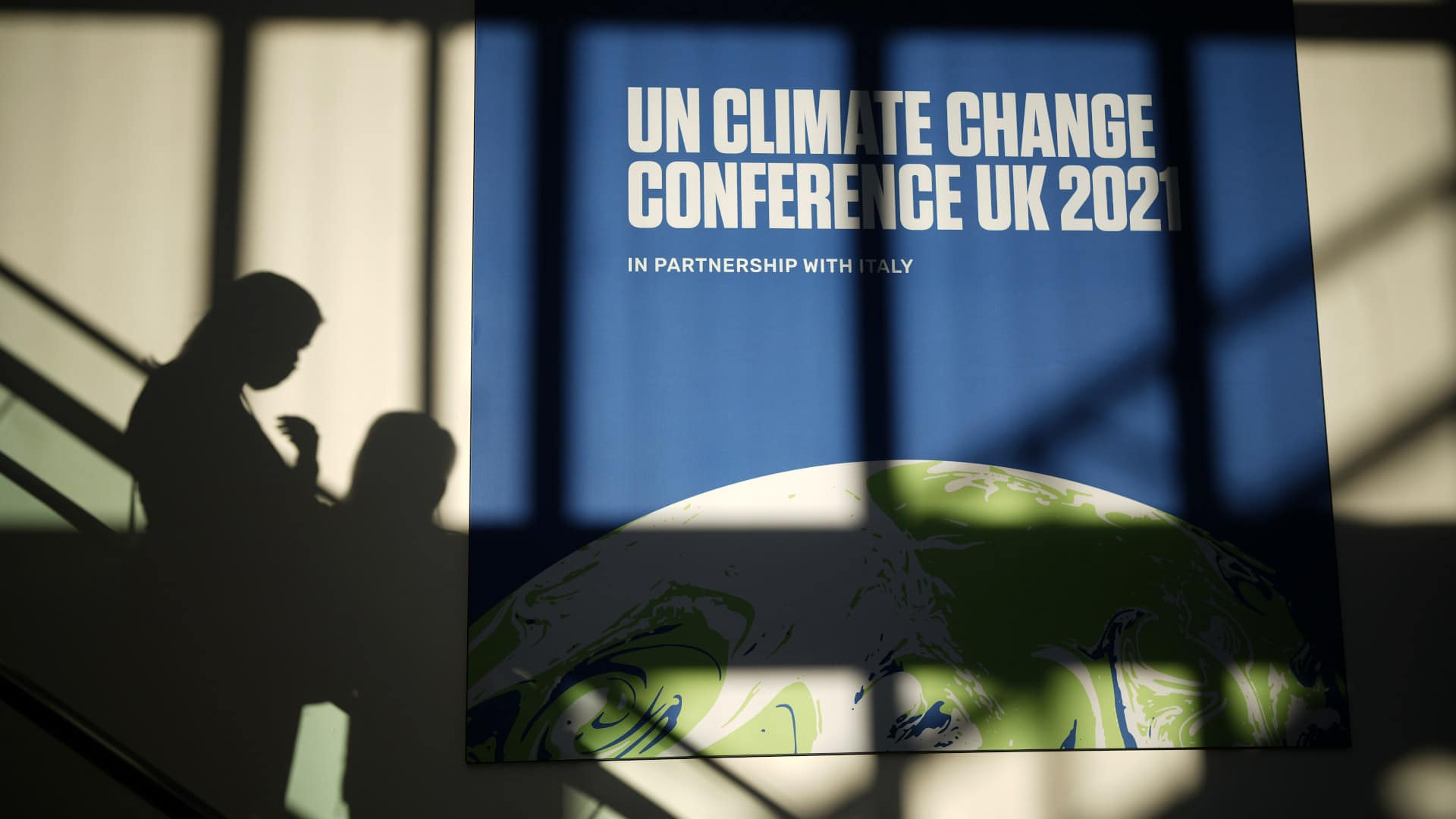World leaders gathered in Glasgow, Scotland this week to respond to some grim scientific projections: The world is on track to warm by more than 5 degrees Fahrenheit above preindustrial levels by 2100; such warming would be catastrophic for entire regions and ecosystems; and current international commitments to reduce climate-altering greenhouse gases are not sufficient to avert serious consequences.
None of this is news. The scientists on the United Nations Intergovernmental Panel on Climate Change warned in 1990 that human activities could warm the planet in a way that has “a significant impact on society.” Over the years, climate researchers have sounded countless alarms that greenhouse gas emissions are swiftly warming the planet, using sophisticated models to paint a picture of future scenarios that range from the frightening, like an increased risk of forest fires, to the utterly dire, including mass displacement of hundreds of millions of people.
The crisis poses an unprecedented challenge: wrangling some 200 countries to solve a collective global problem that requires an overhaul of infrastructure and industry. The Glasgow gathering, called COP26, is the 26th Conference of the Parties, a near-annual meeting in which policymakers gather to set and review plans to reduce carbon emissions. At the 21st such meeting, in Paris in 2015, 195 countries agreed on a landmark set of goals, often termed the Paris Accords, to reduce emissions and limit warming. Even then, it was clear those targets would not be met. Last year, Science described the Paris Accords as “an unusual hybrid of soaring ambitions and few enforcement mechanisms,” noting that countries were missing their targets — and that global emissions had recently reached a new record high.
COP26 aims to reset those commitments, allowing countries to establish more ambitious carbon-cutting goals. Around 25,000 delegates are present at the Glasgow talks, which opened on Sunday. World leaders gave speeches; attendees began meeting in conference rooms. The process has hit some snags, with diplomats complaining of long lines and limited capacity, and civil society organizations saying that, due to Covid-19 restrictions, they’ve been effectively locked out of the meetings.
Already, the two-week gathering has yielded some promises. On Sunday, U.S. President Joe Biden announced a new agreement with the European Union to restructure the steel trade, potentially slashing emissions in the steel and iron production sector, which accounts for around 7 percent of global greenhouse gas emissions. Major banks and investors pledged Wednesday to move their portfolios toward net zero carbon emissions targets. (Some environmental advocates didn’t buy it, pointing out the companies had not committed to stop investing in fossil fuels.) And, on Thursday, a group of more than 40 countries pledged to phase out coal power in the coming years — but the U.S. and China, both major coal users, weren’t on the list.
Negotiations will continue through at least Nov. 12. Meanwhile, global greenhouse gas emissions continue to grow. New data released this week by a team of researchers associated with the nonprofit Global Carbon Project, which has not yet been peer reviewed, suggests global emissions are rising this year after a Covid-19-induced slump — and may reach record levels set before the pandemic began.
Also in the News:
• ProPublica released a detailed map this week of areas of the U.S. with high levels of cancer-causing air pollution. The newsroom compiled the map using data from one of the Environmental Protection Agency’s own modeling tools, as well as advanced information processing software. The result, according to ProPublica, is an “unparalleled view of how toxic air blooms around industrial facilities and spreads into nearby neighborhoods.” The map identifies more than 1,000 hotspots with dangerous amounts of toxic chemicals in the air, affecting homes, schools, and workplaces, including a Delaware daycare in the vicinity of a cloud of ethylene oxide, which has been linked to lymphoma, and a Texas high school near a chemical plant expelling benzene into the air, which can lead to leukemia. Out of the 20 areas with the highest risk, nearly all were in the South in states known for lax environmental regulations, including five in Texas. Analysis also found that in mostly Black census tracts, the risk of exposure to cancer-causing air pollution was more than twice as high as in predominantly White districts. ProPublica also found that the EPA greatly underestimates the potential harm to residents by evaluating sources of pollution on an individual level rather than assessing the effect of a cluster of pollutants around a community. (ProPublica)
• Earlier this week, a hot new cryptocurrency tanked — and observers suspect that whoever created the new coin may have pilfered $3.38 million from investors. The cryptocurrency, named Squid after the hit dystopian Netflix show “Squid Game,” first appeared in late October and was selling for about a cent per coin; just a few days later, it peaked at $2,861, according to Gizmodo, before nose diving to $0. Before that rollercoaster, several news outlets published credulous reports on Squid, likely driving more attention to it. More than 40,000 people still owned the coin when it crashed. Squid’s creators are unknown, but some analysts speculate that whoever made the coin left the market entirely, pulling all of the investors’ money with them. As The New York Times pointed out, Squid’s wild week underscores the fact that cryptocurrency markets are largely unregulated. “Anyone can make up the name of any cryptocurrency,” Molly Jane Zuckerman, head of content at the cryptocurrency price-tracking website CoinMarketCap, told The Times. “You could make up a ‘Mad Men’ token, a ‘Succession’ token. So it’s really important to do your own research.” (Multiple Sources)
• Every 10 years, the National Academies of Science, Engineering, and Medicine convenes scientists from across the astronomy and astrophysics community to draft a survey — a wish list of projects they hope will serve as the field’s roadmap for the decade to come. The latest installment of that survey, a nearly 600-page document dubbed Astro2020, was released this week, and it contains a bevy of ambitious proposals. Among the top recommendations is an $11 billion space telescope, more than twice the width of Hubble, that would scour the cosmos for Earth-like planets. The mission could launch as soon as 2040, the first in a proposed series of space telescopes that some astronomers call the “New Great Observatories.” Astronomers are also asking the U.S. to spend $1.6 billion to support the completion of two outsized ground-based telescopes: the 24.5-meter-wide Giant Magellan Telescope, currently under construction in Chile, and the 30 Meter Telescope, which has suffered delays due to objections from Indigenous communities over its planned location on Hawaii’s Mauna Kea. And in a nod to issues of equity and inclusion that have long plagued the field, the survey recommends several steps for boosting diversity, including gathering data to better track funding inequities. (Nature)
• And finally: The toilet on SpaceX’s Crew Dragon capsule is broken, meaning four astronauts will lack a functional commode during an upcoming, hours-long trip from the International Space Station back to Earth. According to CNN, SpaceX first identified an issue with the Crew Dragon capsule’s toilet when an alarm went off on SpaceX’s first space tourist flight, Inspiration4, which carried four civilians into orbit in September. Upon investigation, SpaceX found issues with the fans that help create suction to manage waste on spacecraft. The tube used to funnel urine into a storage tank had come off, leading to leakage beneath the capsule’s floor. The toilet malfunction has now been identified on all three of the company’s spacecraft, but the astronauts on board Crew Dragon had been in space for months by the time SpaceX discovered the problem. The aircraft has still been deemed safe to fly back to Earth, and, for now, the astronauts have access to the ISS’s bathrooms. But the trip back can take some time — 19 hours for one previous journey, and 6 hours for another — and, according to NASA Commercial Crew Program Manager Steve Stich, the crew will have to rely on undergarments once they start their trip back home. (CNN Business)
“Also in the News” items are compiled and written by Undark staff. Brooke Borel, Lucas Haugen, Sudhi Oberoi, and Ashley Smart contributed to this roundup.










